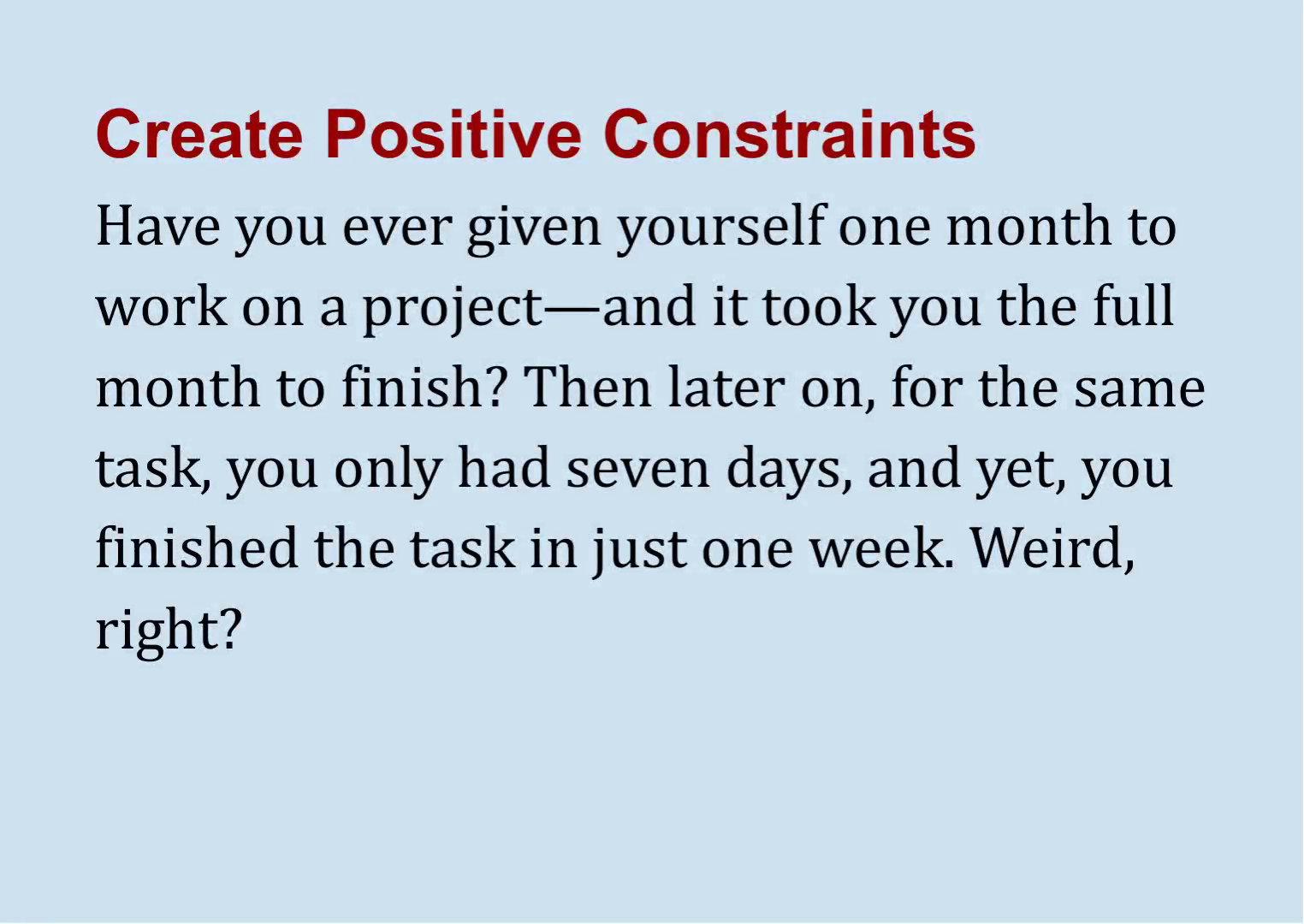
Page 1 (0s)
[Audio] Create Positive Constraints Have you ever given yourself one month to work on a project—and it took you the full month to finish? Then later on, for the same task, you only had seven days, and yet, you finished the task in just one week. Weird, right?.
Page 2 (19s)
[Audio] This happens because overthinking expands to the time we allow it. This is exactly why there is great power in creating constraints and accountability so that you don't delay or agonize over choices. In fact, the Association of Talent Development finds that your likelihood of success increases up to 95% by simply.
Page 3 (44s)
[Audio] making a commitment to do something or by sharing it with someone else. Creating external limits disciplines your brain into taking action and taking less time to mull things over. One way you can do this is by time boxing how long you spend on a task. Many of my.
Page 4 (1m 5s)
[Audio] coaching clients also like the Pomodoro technique. This involves setting a timer for 25 minutes, working until the bell rings, and then taking a 5-minute break. After four sessions, you've earned a 15-minute break. You can also limit the resources you consult is another way to short-circuit.
Page 5 (1m 30s)
[Audio] overthinking. Determine the number of subject matter experts you'll speak to or create a shortlist of credible websites to reference, for instance. Giving yourself a deadline also helps. Pick a date or time by which you'll make a choice. Put it in your calendar, set a reminder on your phone, or better yet – contact the.
Page 6 (1m 55s)
[Audio] person who is waiting for your decision and let them know when they can expect to hear from you. Committing to a deadline publicly in a meeting or via email is one of the best ways to ensure you follow through..
Page 7 (2m 9s)
[Audio] You can also recruit the help of others by scheduling a chat with a coworker, your manager, a mentor, or friend if you find yourself stuck in thought. This will prompt you to organize and synthesize the information that's been bouncing around your head in a clear, concise way..